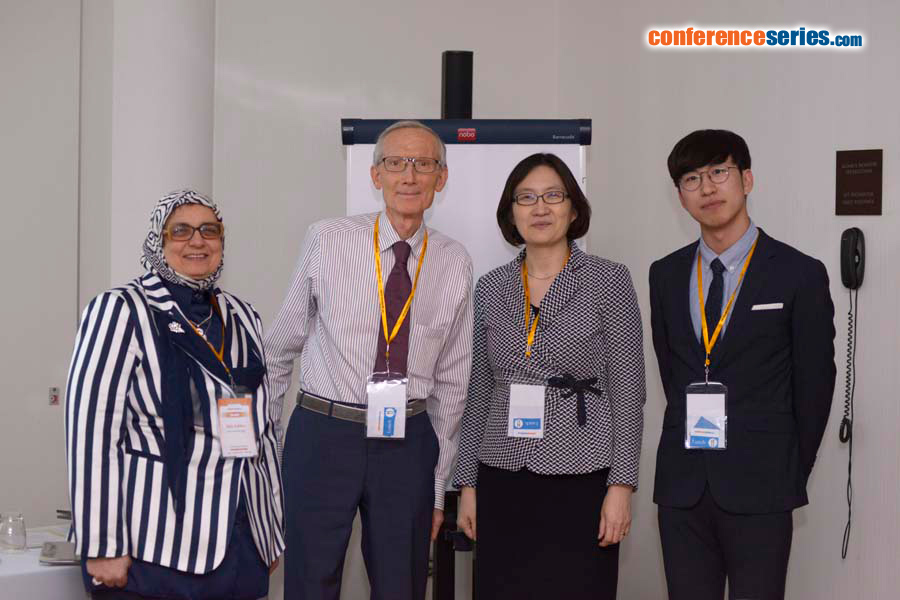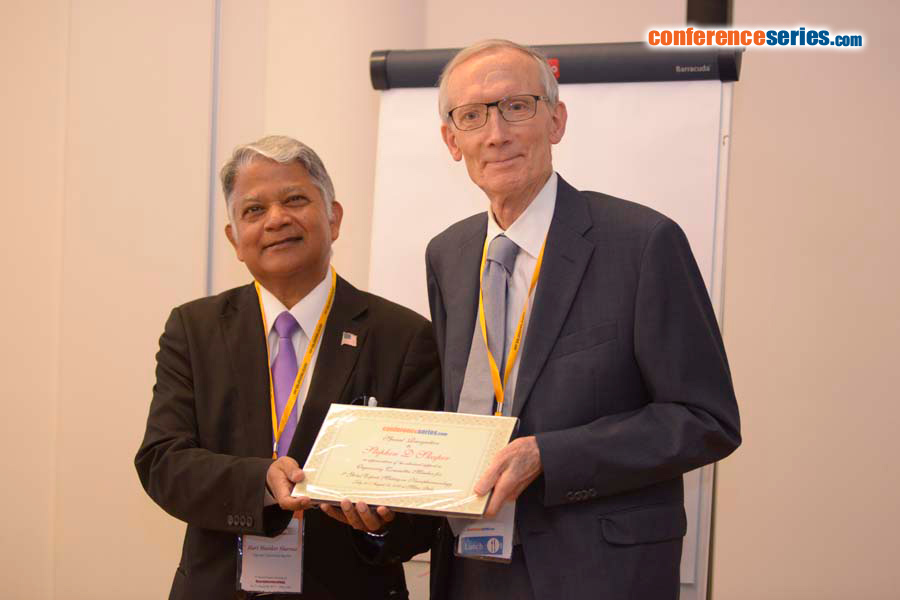
Stephen D Skaper
University of Padua, Italy
Title: Co-ultramicronized palmitoylethanolamide/luteolin facilitates oligodendrocyte precursor cell development and improves outcome in experimental autoimmune encephalomyelitis
Biography
Biography: Stephen D Skaper
Abstract
Oligodendrocytes, the myelin-producing cells of the CNS have limited ability to repair damage either to themselves or to other nerve cells. Such is the case in multiple sclerosis (MS), a chronic CNS neuroinflammatory demyelinating disorder. MS lesions are characterized by the presence of a compromised pool of undifferentiated oligodendrocyte precursor cells (OPCs) which fail to mature into myelin-producing oligodendrocytes. An attractive strategy may thus be to replace lost oligodendrocytes and/or promote their maturation or proliferation. N-palmitoylethanolamine (PEA), an endogenous fatty acid amide signaling molecule possesses analgesic, anti-inflammatory, and neuroprotective actions. Recent studies show a co-ultramicronized composite of PEA and the flavonoid luteolin (co-ultraPEALut, 10:1 by mass) to be more efficacious that PEA alone in improving outcome in CNS injury models. Here, we examined the effects of co-ultraPEALut on the survival and development of OPCs isolated from newborn rat cortical mixed glial cell cultures. OPCs were maintained under conditions which favored either proliferation (basic fibroblast factor and platelet-derived growth factor (PDGF)-AA-supplemented serum-free medium (‘SFM’)) or differentiation (Sato medium containing T3 and T4). OPCs cultured in SFM displayed high expression of PDGF receptor alpha gene and the established proliferation marker Ki67 in the presence of 10 mM co-ultraPEALut and down-regulation of Apoe, whose deletion reportedly leads to a later time of peak symptoms/disease severity and less severe demyelination/axonal damage in myelin oligodendrocyte glycoprotein (MOG35-55)-induced experimental autoimmune encephalomyelitis (EAE) in female C57BL/6 mice. In Sato medium OPCs showed rapid decreases in PDGF receptor alpha and Ki67 expression but a time-dependent rise in myelin basic protein (MBP) expression. In the latter conditions co-ultraPEALut (10 mM) enhanced OPC morphological complexity, protein content, and gene expression for MBP, proteolipid protein and 2',3'-cyclic nucleotide 3'-phosphodiesterase, as well as genes coding for enzymes involved in cholesterol and fatty acid synthesis – all important components of myelin. Co-ultraPEALut also increased OPC content of MBP. Moreover, co-ultraPEALut dose-dependentlyimproved the clinical score in this EAE mouse model, which is often used as a chronic first-pass model of MS. Hence, strategies intended to promote endogenous remyelination in MS should focus on both enhancing the long-term survival of OPCs and on stimulating these cells to differentiate into remyelinating oligodendrocytes. Within this context, co-ultraPEALut may represent a novel pharmacological approach.







